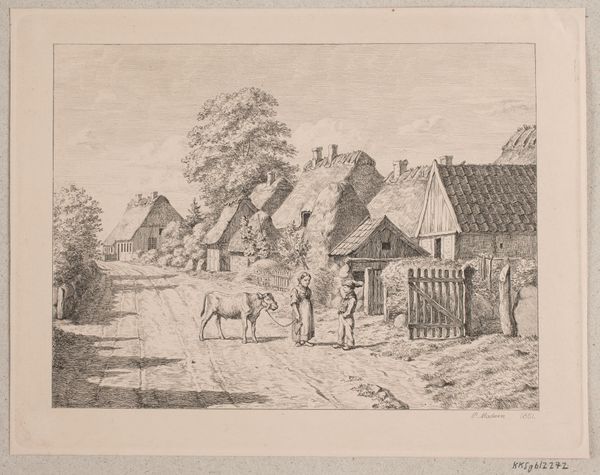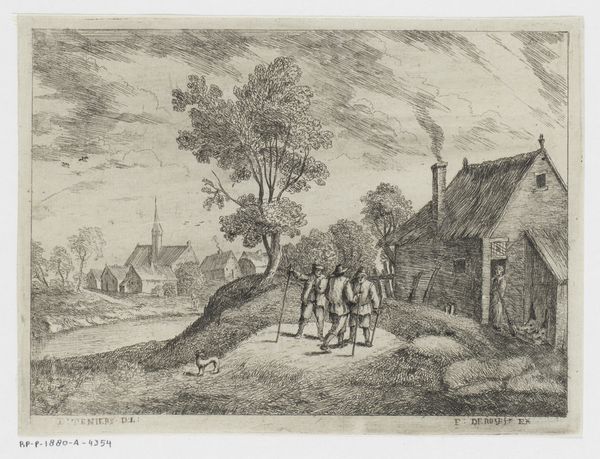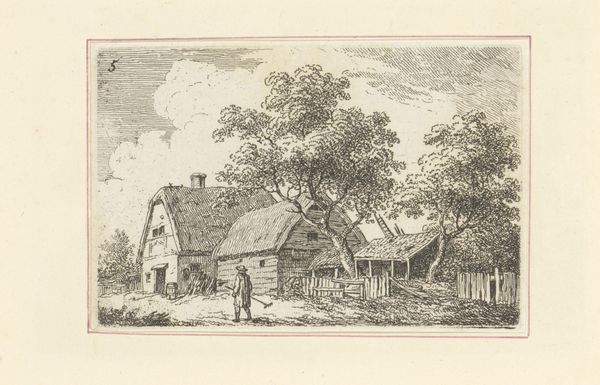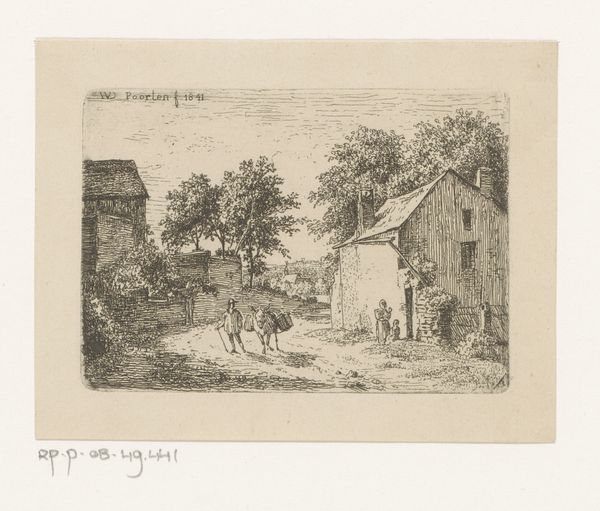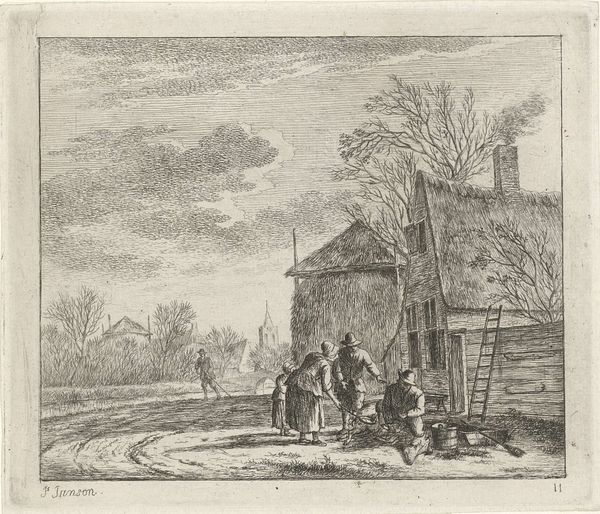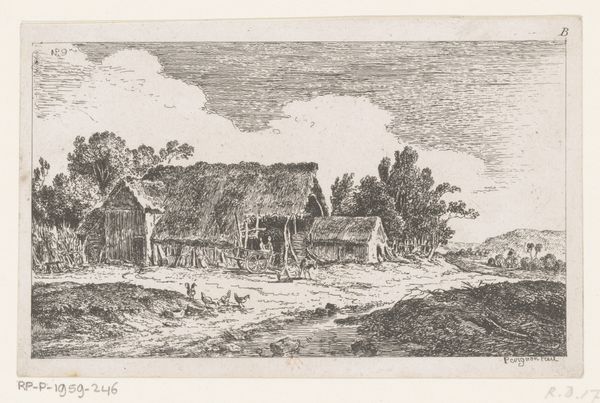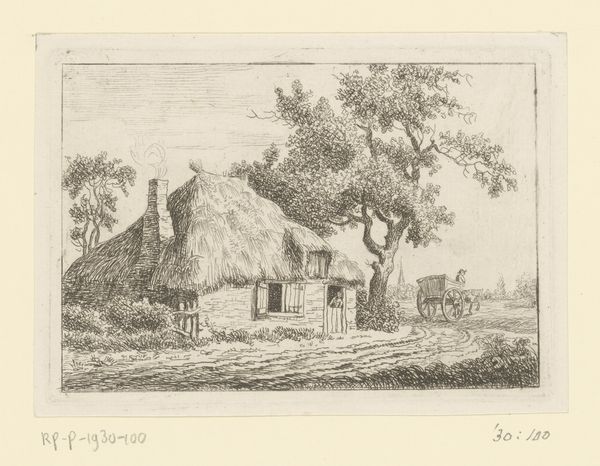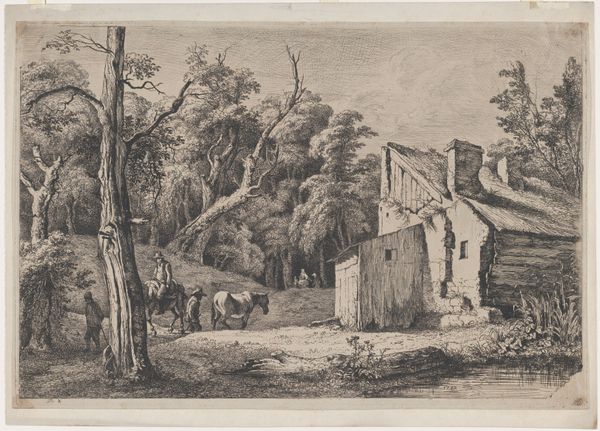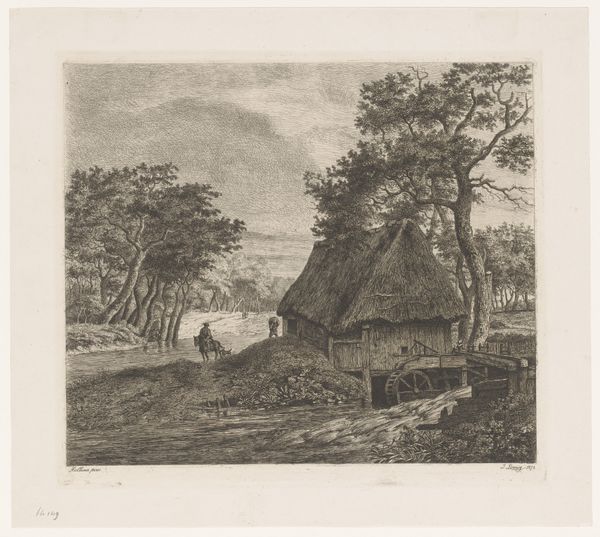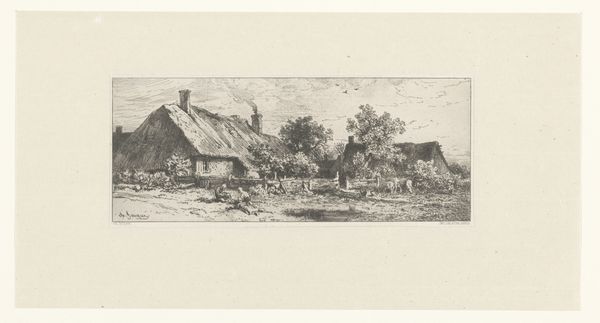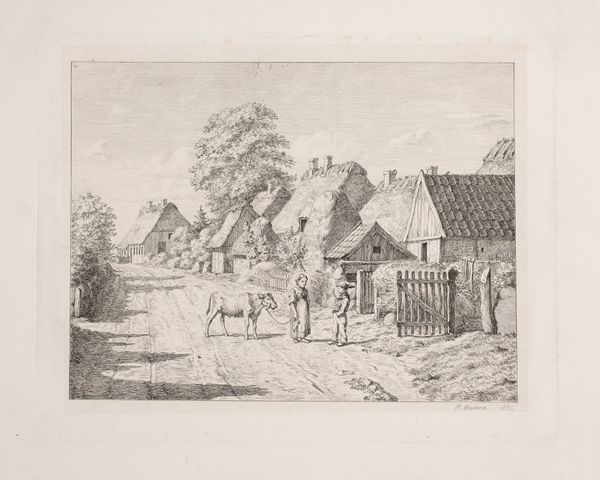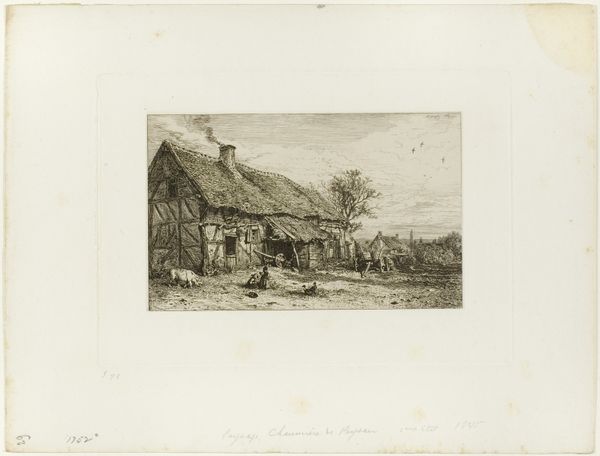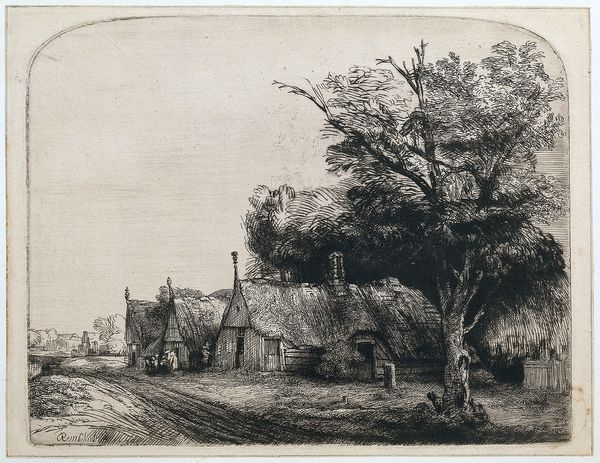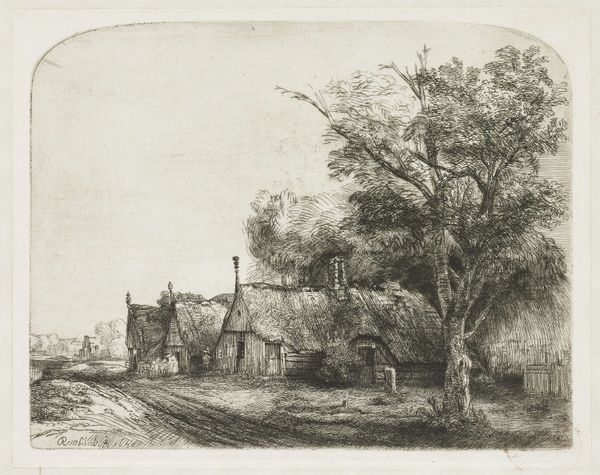
drawing, print, etching
#
drawing
#
aged paper
#
light pencil work
# print
#
etching
#
pencil sketch
#
dog
#
old engraving style
#
sketch book
#
landscape
#
personal sketchbook
#
sketchwork
#
pen-ink sketch
#
sketchbook drawing
#
genre-painting
#
sketchbook art
Dimensions: height 117 mm, width 135 mm
Copyright: Rijks Museum: Open Domain
Curator: This etching, titled "Drie mannen voor een herberg" – or "Three Men Before an Inn"– is attributed to William Unger and believed to have been created sometime between 1847 and 1889. It’s part of the Rijksmuseum’s collection. Editor: It feels like peering through time. The light pencil work gives the whole scene an ethereal quality. A quiet stillness, a narrative only just suggested... almost like catching a half-forgotten memory. Curator: Indeed, the 'old engraving style' lends a certain gravitas. We see three figures in what appears to be a casual meeting, perhaps a negotiation, outside a humble-looking inn. A dog adds a touch of everyday realism. What I find interesting is Unger’s capture of this specific social dynamic. Inns, historically, were critical spaces for news, business, and community. Editor: It feels… comfortable? Though comfortable isn’t quite right. More like… unpretentious. I mean, the light seems to embrace everything, even that modest inn and the sketchiness adds intimacy, like we're looking at something private from someone's personal sketchbook. Did Unger intend for it to feel so… immediate? Curator: Unger was fascinated with Rembrandt, emulating his style in his etchings after earlier artistic efforts in lithography and even photography. He was invested in the revitalization of the etching technique, giving it the status it arguably holds today as an independent artform. He often used much older works as templates. So yes, while it conveys that intimate 'immediate' feel you identified, it does so referencing well-established tropes. Editor: And what of the setting, its composition? Curator: The positioning of the inn on the right, drawing our eye along that path from left to right, subtly emphasizes the narrative unfolding at the inn's doorstep. Genre painting in its truest form. He takes this relatively simple moment in time and turns it into something beautiful to look at! Editor: It almost feels like a snapshot, albeit one with very intentional composition, doesn't it? Unger managed to capture something beautifully universal within the mundane. I'm seeing how seemingly effortless drawings have historical stories beneath them.
Comments
No comments
Be the first to comment and join the conversation on the ultimate creative platform.
